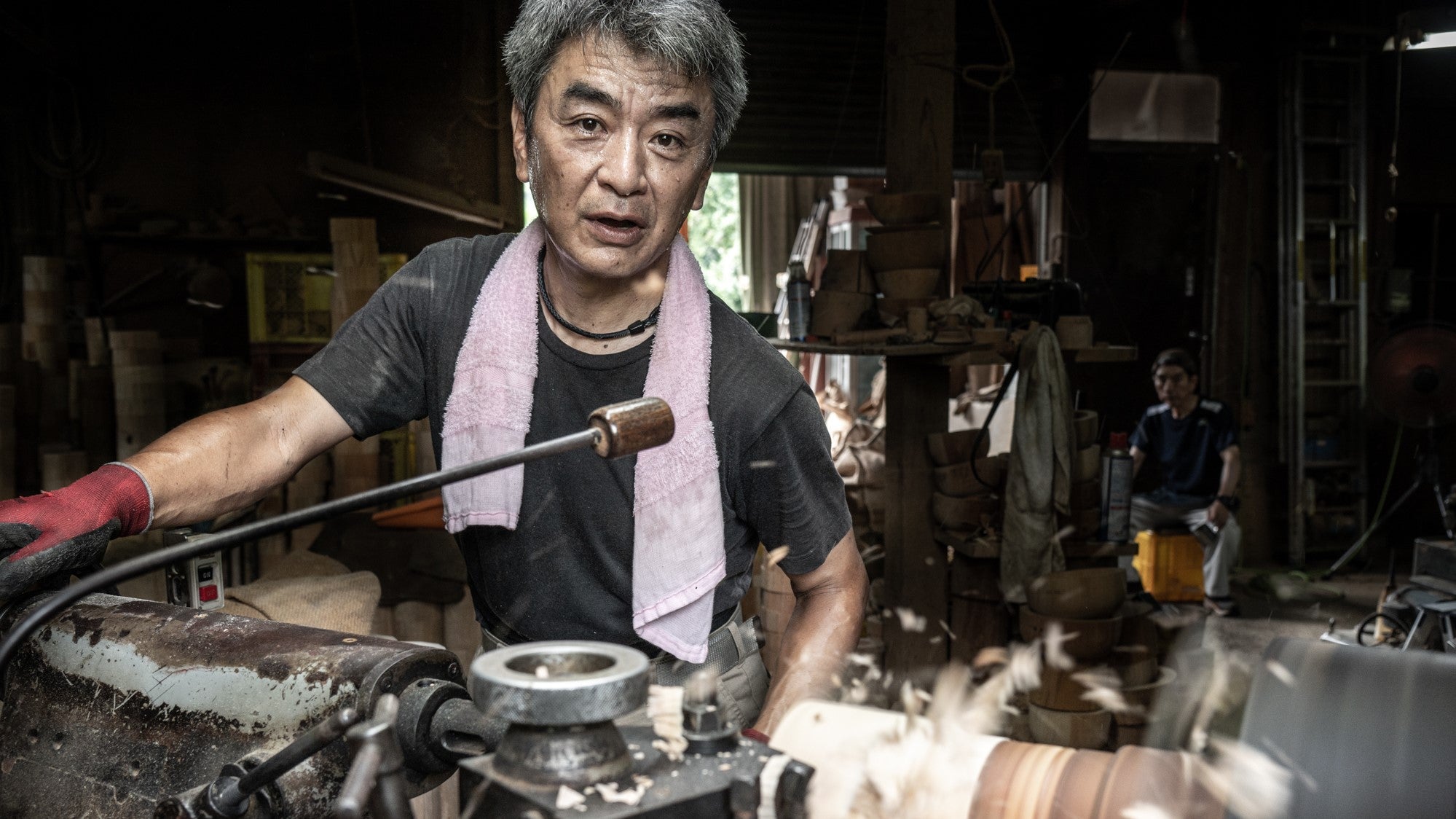
“Arabiki-shi” Rough Grinder Craftsmen of Yamanaka Lacquerware
Written by Team MUSUBI
About two hours from Tokyo by air and land, Yamanaka Onsen (Hot Spring) Town is located in the mountains alongside a beautiful valley in Ishikawa Prefecture and is lined with historic hot spring inns and many souvenir shops.


A number of craftsmen take part in the making of a single Yamanaka lacquerware product. Some specialize in making the rough mold from wood, some shape the mold into a bowl, and others are specialists who apply the lacquer. You can find many workshops of different sizes all over the hot springs area.
We were able to visit several workshops of Yamanaka lacquerware production with the cooperation of Mr. Ohara, who was born and raised in Yamanaka Onsen Town and runs a souvenir shop "Ohara-Bunpeido".
Let me introduce some of the workshops we were able to visit.
table of contents
“Arabiki-shi” Rough Grinder Craftsmen


They procure good quality logs, cut them to the optimum position and thickness, and provide them to the craftsmen, imagining how the logs will be used to make a tableware item. Experienced arabiki-shi is said to be able to imagine what kind of tableware it is best suited for just by looking at the log.
Note: In the art of woodworking, the term "Hikimono" refers mainly to lathe-turned pieces, while "Itamono" or "Sashimono" refers to pieces made by joining boards, such as Jubako bento boxes and chests
Yamashita Woodworks




Vertical and horizontal wood-turning

Vertical bowls are less likely to crack or warp, and can be ground thinner, but the amount of wood from a single tree is smaller because the core of the tree, which is prone to cracking, needs to be avoided.

Yamanaka Lacquer and Wood
It is said that Yamanaka lacquerware originated about 400 years ago when a group of woodworkers who made turned wood tableware for a living settled near the upper reaches of Yamanaka Hot Springs, which was blessed with high-quality wood. They began making bowls as souvenirs. After that, bowl making as an industry flourished by purchasing good quality hardwood lumber from among those cut for pulp in various parts of Japan.
The factory manager explains, "it is getting harder and harder to get good quality lumber at low prices."

The reason behind the factory manager's comment is a change in Japan's lumber industry. In the past, large-scale logging for pulp was carried out throughout Japan, so to obtain good quality wood, one only had to choose from a large number of trees that had been cut down.
However, after inexpensive pulpwood began to be imported, the domestic forestry industry declined significantly, and in order to obtain good quality domestic wood, one had to go into the mountains and forests in search of such trees. In addition, because trees are not cut regularly, the number of good quality trees themselves is decreasing as the regeneration cycle of the mountains has slowed down.

"Trees must be cut and used in moderation," the manager continued.
History has clearly shown that excessive logging is not good for the global environment, but it is also important to cut down trees in moderate amounts and reforest them in order to grow good quality trees.
By incorporating beautiful tableware made from domestic wood into our daily lives, rather than focusing exclusively on inexpensive imported timber, we may be indirectly contributing to the cultivation of beautiful timber and the preservation of fine traditional crafts.


Looking around the corner of the factory, I saw a large pile of scrap wood and sawdust. These are used as fuel for fumigating and drying the carved wood and for keeping warm in the winter. The people living in the mountains and forests have a unique way of using nature's bounty without putting it to waste.
Next time, I will focus on "Kijishi” workshop.
Photo Gallery
















Leave a comment
This site is protected by hCaptcha and the hCaptcha Privacy Policy and Terms of Service apply.